“Man lives in time, in the succession of time, and the magical animal in modernity, in constant eternity.” (Jorge Luis Borges)
Until the end, beyond the end, but what then is the end?
What is the time, like the universe, something infinite in its happening and expand? The only certainty that modern history has taught us, giving us century after century the meaning of capitalism is the monetization of time – of working time – productive and economically useful.
Idleness seems a concept banned from contemporary dictates, we are not allowed to stop, we are not allowed to idle. And what happens when the technologies come on stage? The same ones that have accelerated and accelerated the productive and vital process of each one of us. Those perennially pointed out as alienating and sometimes dangerous. The cult TV series “Black Mirror” has provided us with many readings on a certainly despotic future at times entropic, where the technology step by step seems to celebrate almost the futility and the transience inherent to mankind.
The artist and activist Guido Segni reflects on this through the works exhibited in the Bologna space – Adiacenze, curated by Alessandra Ioalè and Marco Mancuso, two of the curators and researchers already interesting and informed about the impact and use of contemporary technologies in contemporary art.
Among activism, net art, video art and endless intersections with the pop culture of the Internet – Guido Segni is one of the artists to follow in his research for what concerns the new media art, or simply what we mean when we think about the web culture and its connection to artistic mediums.
The form of the archive allows you to study and vivisect, deepen any topic – which environment and best archive of the web to study live streaming the perennial flow to which we are constantly exposed?
In the first room of Adiacenze we find the video from which the title itself draws: “Until the end” of 2018 – a work that can not really have an end because it is generated by an algorithm that selects and assembles the segments every day of the first 25 frames corresponding to the first second of each video uploaded to YouTube. What ensues is a continuous stream of images produced by the millions of users on the most famous video sharing platform in the world. Beyond every image, beyond all limits, but also beyond technology and beyond time.
In “The Artist is typing”, 2016 – production time and waiting time meet: the visitor will be in moments when the artist is writing (or not) and then where he is physically at the computer (or maybe someone for him) ), with the famous visualization of the floating dots present in every Instant chat system – the artist could write an email, a text, a love letter (as mentioned in the critical text), could simply play with the keyboard, order something on Amazon or chat with someone. “The artist is present” would say someone else very famous – the performance, the action, then it does not become possible only with the artist physically present but it can also happen through a technological device and software that celebrate its essence (or absence).
In “Verba volant, scripta manent” 2017, the work represents in a dichotomous way the ephemeral communication of a Tweet – the thought through Twitter can be inconsistent, evanescent and very rapid, in this work here that contrarily words acquire a specific weight, lasting, sculpted on the real marble, thanks to the artist’s operation. Signs re-elaborates the present prevailing of social networks comparing it with tradition, history, starting from a classic and noble material like marble, and choosing one of the most famous Latin phrases.
“Verba volant, scripta manent” can easily be defined as a multiverse – multi-temporal work – that investigates at the same time several epochs at the same time.
In “A quiet Desert failure” 2015, Segni continues to challenge technological obsolescence by asking himself this question: “What will happen to my creation with the passage of time?”. “A quiet Desert failure” is an algorithmic performance (it is always correct to speak of performance in the works of Signs) started in 2013, and consists of an automated system that for five years has posted and archived a satellite image of a defined area of the Sahara desert, every thirty minutes, with the aim of mapping, within fifty years, the entire sand colossus. The deep uncertainty remains: will Google, Tumblr and the same Internet network last long enough to see a completion, an end? The only certainty of this work, beyond the concept behind this algorithmic work, are the prints that derive from it, authentic traces that document a memory in continuous transformation and fragmentation.
In the last room, with a very studied and high-quality layout, the visitor is welcomed in a red, pulsating, lively and phantasmagorical corner, between obscurity and curiosity.
A bed as a spectator, and several red flags waving with a clear autonomy, carry a clear message, the title of the project: “Demand full Laziness” (2018-2023) where lost time and production time come into dialogue. In this case the artist claims laziness and idleness as open experimentation fields, also questioning the role of technological automation. In this umpteenth performative act the artist makes the machine perform operations of observation and representation of reality in its place – according to a five-year automated production plan – all thanks to an algorithmic system in deep learning. Will the car be a worthy substitute? Will it be able to be a delegated polish?
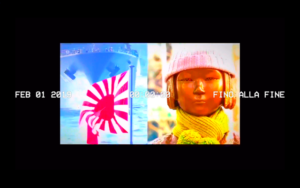 Guido Segni, Fino alla fine (cover image)
Guido Segni, Fino alla fine (cover image)
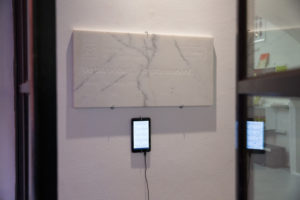 Guido Segni, Verba Volant, scripta manent, 2017 ph credit Luciano Paselli
Guido Segni, Verba Volant, scripta manent, 2017 ph credit Luciano Paselli
 Guido Segni, The Artist is typing, 2016
Guido Segni, The Artist is typing, 2016
 Guido Segni, Demand Full Laziness, installation view Adiacenze, ph credit Luciano Paselli
Guido Segni, Demand Full Laziness, installation view Adiacenze, ph credit Luciano Paselli
 Guido Segni, Demand Full Laziness, 2018-2023, installation view Adiacenze – ph credit Luciano Paselli
Guido Segni, Demand Full Laziness, 2018-2023, installation view Adiacenze – ph credit Luciano Paselli
The traces that derive here, too, are telluric, fragmented, works produced by the cognitive act of the algorithm – the artist in conclusion, “nothing has produced but to rest on his own bed.”
In all these works the artist Guido Segni (founder together with Matìas Ezequiel Reyes of Greencube.gallery project of online / off-line research – to follow!), Wants to make us reflect on the artistic creation, on the liberation of it from the consumer time, on survival of the work (performative) beyond the artist himself, putting back in the field the positive possibility of technological automation (with all its precarious logic) so much demonized and criticized by the contemporary. Signs utopistically but not naively perceives a possible projection of the work beyond the carnality of existence – delegating to technology the preservation and promotion of what is to come. Here’s how to redeem the trust of and over time. A bet for the artist, the work itself, technology, time, collectors, gallery owners and users.
The end will come, but it will not be the end.
“All human problems come from not being able to stand still in a room.” (Blaise Pascal)
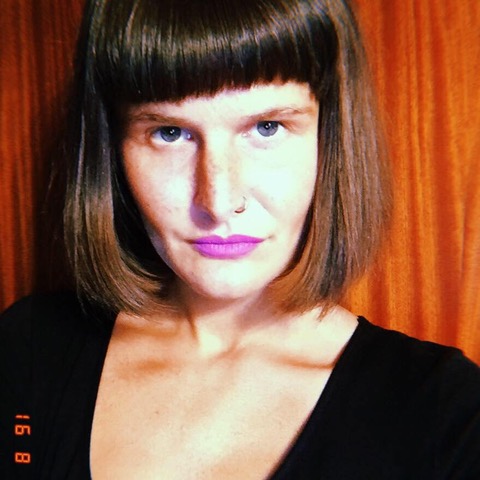
(1990) Graduated at DAMS in Bologna in Visual Arts with a thesis on the relationship and the paradoxes that exist between photography and fashion, from Cecil Beaton to Cindy Sherman, she specializes at the Academy of Fine Arts in Bologna in the two-year course in art teaching, communication and cultural mediation of the artistic heritage with a thesis on the historical-critical path of Francesca Alinovi, a postmodern critique. Since 2012 she has started to collaborate with exhibition spaces carrying out various activities: from setting up exhibitions to writing critical texts or press releases, to educational workshops for children, and social media manager. She has been collaborating since 2011 with various magazines: Vogue online, The Artship, Broken Fracture, Wall Street International Magazine, Forme Uniche Magazine.


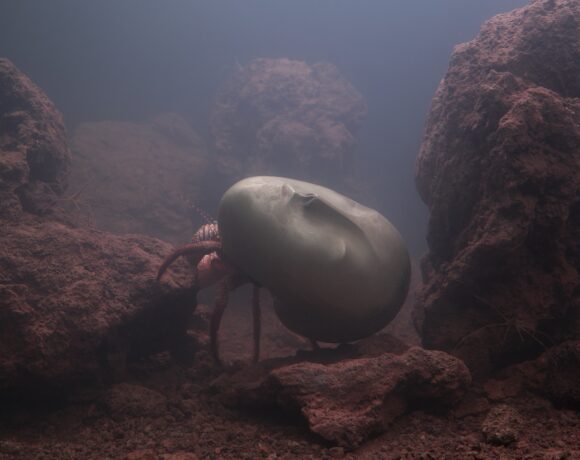
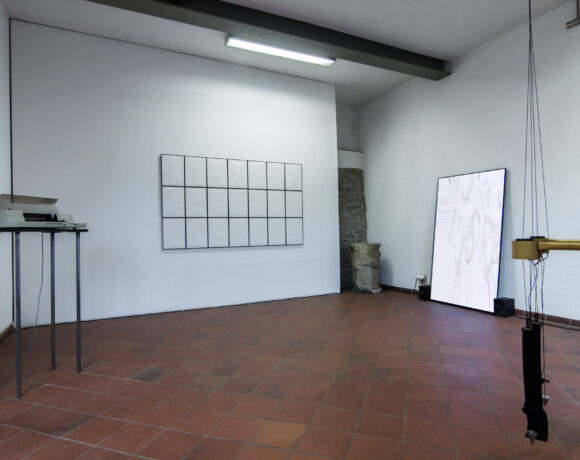
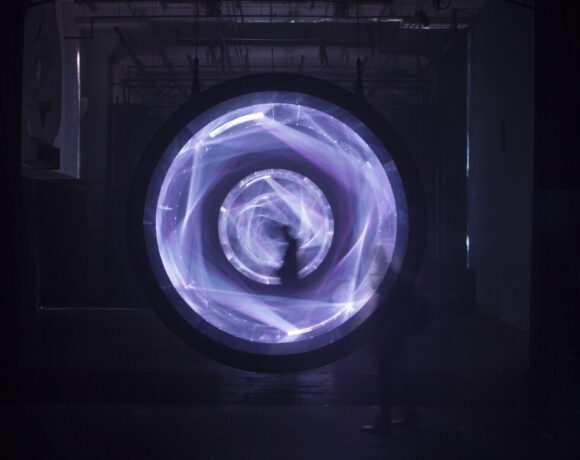

NO COMMENT